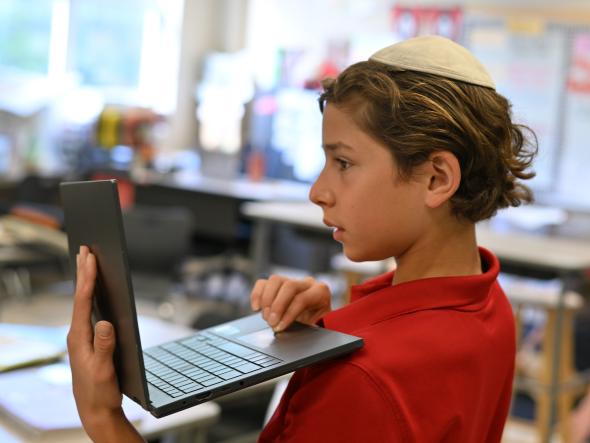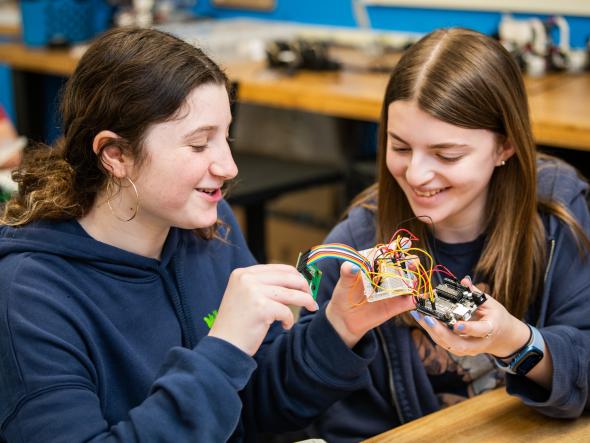Beware the Book
In Phaedrus, Plato laments the creation of books, which he suggests will “implant forgetfulness” in the souls of students, allowing them to seek “remembrance no longer from within themselves, but by means of external marks.” He suggests that reliance on books is the “conceit of wisdom.” It will allow students to feign knowledge on topics they do not really understand. While we might chuckle at Plato’s fear of books today, imagine what he might think about the internet, artificial intelligence or social media.
This article suggests that educators diminish technology’s value if they equate it to the book in Plato’s Phaedrus, a tool solely for transmitting content knowledge. Rather, educators should use technology for the development of 21st century learning skills, commonly known as the 4 Cs: critical thinking, creativity, collaboration, and communication. Additionally, regardless of the subject, teachers should explore these skills as part of a broader connection to Jewish values.
Through this synergy, teachers can optimize the use of technology for broader educational goals, assess the value of employing an edtech tool, and foster a holistic learning environment that supports Jewish values, tech literacy and lifelong learning.
Critical Thinking: Excellent Questions are Key
Isidor I. Rabi, a Nobel laureate in physics, was once asked what encouraged him to become a scientist. Rabi explained that upon returning from school each day, his mother would not ask, “Izzy, what did you learn today,” but rather “Izzy, did you ask a good question today?” Emphasizing the importance of inquiry over the information, Rabi’s mother planted the seeds for a lifetime of critical thinking.
Critical thinking is the ability for learners to analyze, synthesize and evaluate information in a discerning way. It demands weighing the credibility of sources, understanding the distinction between fact and opinion, recognizing bias, contextualizing knowledge and using prior learning as the basis for new inquiry. While not every learner will become a world-renowned physicist, developing critical thinking skills is vital for lifelong learning.
Judaism’s appreciation of critical thinking is evident in its approach to Talmud study. Rabbis across generations pull apart the arguments of their thought partners to clarify, uphold or dispute another’s interpretation. The Babylonian Talmud understands this process as vital to sharpening the thinking of both scholars, leading to deeper understanding (Ta’anit 7a):
Rabbi Ḥama, son of Rabbi Ḥanina, said: What is the meaning of that which is written: “Iron sharpens iron, so a man sharpens the countenance of his friend” (Proverbs 27:17)? This verse comes to tell you that just as with these iron implements, one sharpens the other when they are rubbed against each other, so too, when Torah scholars study together, they sharpen one another in halakhah.







